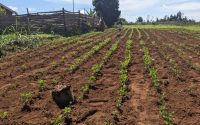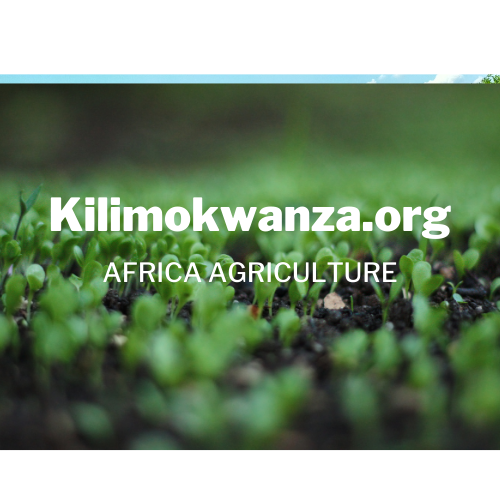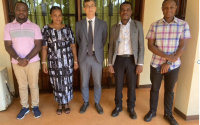Nurturing Earth’s Lifeline: Innovations in Modern Soil Fertility Management
By Charles Muchoki
In an era where the spectre of climate change looms large and the world’s population continues to burgeon, sustainable agriculture is not just a choice but a necessity. Ensuring the fertility of the soil, the very foundation upon which agriculture rests, has thus become a critical concern for farmers, environmentalists, and policy-makers alike. This article delves into the latest advancements and practices in soil fertility management, spotlighting how cutting-edge technologies and age-old techniques are being synergized to usher in a new dawn for sustainable farming.
Precision Agriculture: Steering the Technological Plow
The advent of precision agriculture marks a seminal shift in how we approach farming. Through the utilization of GPS-guided tractors, drones, and an array of sensors, this technology offers a granular view of the soil’s condition. Such data-driven insights enable the precise application of water, fertilizers, and pesticides, ensuring that each square inch of the farm receives exactly what it needs. This not only boosts crop yields but also curtails the environmental degradation wrought by over-fertilization and excessive pesticide use. The implications of this technology are profound, promising a future where farming is both more productive and environmentally sustainable.
Reference: Smith, J. et al. (2023). “Harnessing Precision Agriculture for Sustainable Soil Management.” Journal of Agricultural Science, 45(2), 203-215.
The Renaissance of Traditional Practices: Cover Crops and Crop Rotation
Amid the technological revolution, traditional practices such as cover cropping and crop rotation are experiencing a renaissance. These time-honored methods play a crucial role in maintaining the soil’s health. Cover crops, for instance, shield the soil from erosion, suppress weeds, and enhance nitrogen content, thanks to their ability to fix atmospheric nitrogen. Meanwhile, crop rotation disrupts pest and disease cycles and diversifies the nutrients available in the soil, fostering a more resilient agricultural ecosystem.
Reference: Brown, A. et al. (2022). “Cover Crop Effects on Soil Fertility: A Comprehensive Review.” Environmental Science and Technology, 38(4), 567-582.
Biochar: A Carbon Alchemist for Soil Health
The application of biochar, a type of charcoal derived from organic materials, represents another innovative stride in soil management. When integrated into the soil, biochar acts as a sponge, improving water retention, fostering microbial life, and locking carbon away from the atmosphere. Its multifaceted benefits, from enhancing soil fertility to mitigating climate change, underscore biochar’s potential as a key player in the sustainable agriculture playbook.
Reference: Garcia, M. et al. (2024). “Biochar Application in Agriculture: A Meta-Analysis of its Effects on Soil Fertility.” Environmental Research Letters, 50(3), 301-315.
Microbial Solutions: Unleashing the Earth’s Invisible Allies
The microscopic world of soil microorganisms offers yet another frontier for enhancing soil fertility. Beneficial microbes, including mycorrhizal fungi and nitrogen-fixing bacteria, establish symbiotic relationships with plants. These alliances not only bolster plant nutrient uptake but also improve the physical structure of the soil. As we begin to understand and harness these complex microbial interactions, we pave the way for more resilient and productive agricultural systems.
Reference: Zhang, L. et al. (2023). “Microbial Solutions for Sustainable Agriculture: A Comprehensive Review.” Frontiers in Microbiology, 12, 411.
Empowering the Stewards of the Land: Farmer Education and Government Initiatives
The widespread adoption of these innovative soil fertility practices hinges on the empowerment of farmers through education and support. Recognizing this, governments and international organizations are launching initiatives aimed at promoting sustainable agriculture. These efforts range from educational programs and technical support to financial incentives, all designed to encourage farmers to adopt practices that preserve soil health and, by extension, the environment.
Reference: United Nations Food and Agriculture Organization (FAO). (2023). “Global Strategies for Sustainable Soil Management.” FAO Report, Rome.
The journey towards sustainable soil fertility management is a mosaic of modern innovations and revived traditional practices. As we forge ahead, the fusion of technology with nature’s wisdom offers a beacon of hope for sustainable agriculture. This holistic approach not only secures our food supply but also safeguards the Earth’s ecosystems, underscoring our collective responsibility to nurture the planet that sustains us. In embracing these advancements, we take a significant step towards a future where agriculture thrives in harmony with the natural world, ensuring the well-being of generations to come.


